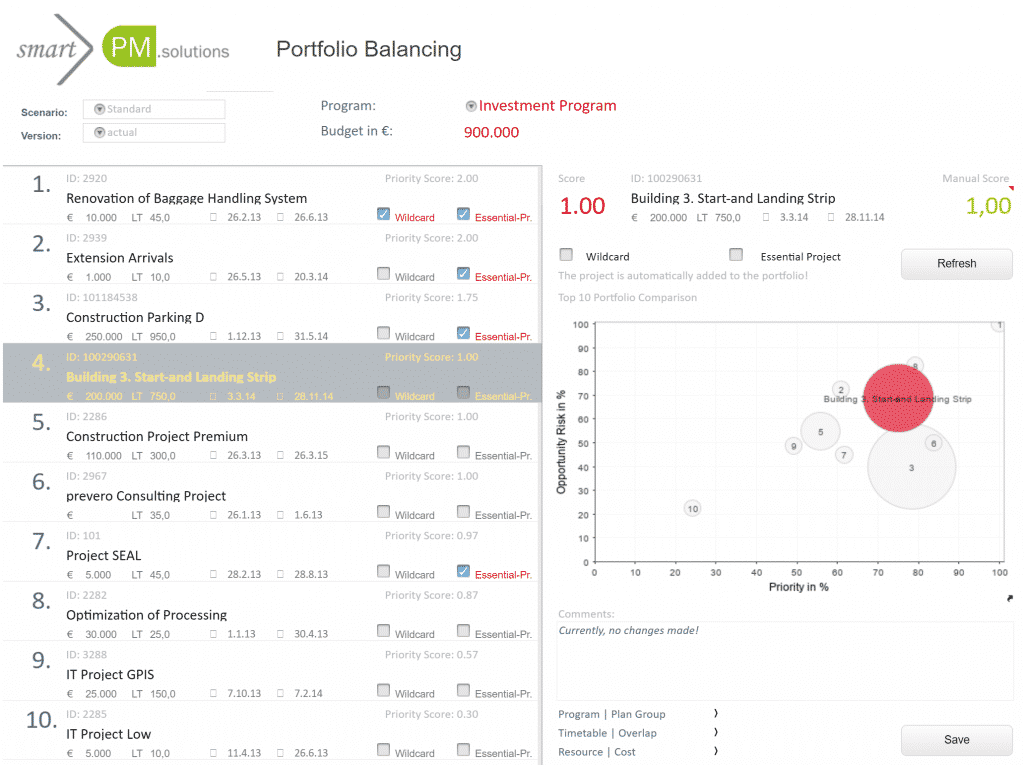As the person responsible for project controlling, the following activities are certainly part of your everyday work:
- Approve / reject projects
- Optimally distribute project resources including personnel and resolve resource conflicts
- Allocate budgets
- Monitor projects and portfolios and report to management.
In addition to that it must be guaranteed that all projects are carried out with the highest quality, minimum costs, and within the shortest possible time. Not an easy task with limited capacities.
A comprehensive overview of all projects and project portfolios is a must for each project controller – to be able to intervene in case of urgency and act on deviations. Excel files, available in numerous versions, are the second best approach to project controlling: Figure 1 shows how the process of collecting relevant project data looks like in a large international company:
This particular company is not the only one with a comparably complex structure of project business. Many of our client companies initially show us similar processes and complain about inefficiencies and low data trust. We have taken this as an opportunity and are presenting successful project and portfolio management in 6 ½ tried and tested steps. Figure 2 provides the respective overview.
We start with the ½ step, because this is not exclusively attributable to project controlling, but it is the foundation for successful project management: the integrated data solution. In order to guarantee 100% data trust and the quick access of all parties involved, all relevant data from various company sources (personnel planning, procurement, incoming orders, etc.) must be brought together. Building on this, well-founded decisions can be made. A modular, flexible CPM software solution is recommended, which allows for project controlling and portfolio optimization. SmartPM.solutions already has a lot of experience in this area. Our project controlling solution has proven itself with numerous customers and has led to considerable cost and time savings.
Now to steps 1 to 6 of optimized Project Performance Management in a nutshell:
If you don’t just want to get an overview of the steps, but are interested in the topic and the possibilities of project controlling, check out our white paper with numerous examples and analysis graphics:
Step 1: Definition of the framework and guidelines for project controlling
Successful project controlling starts with precise criteria for project submission and approval itself, but also affects the project participants and their roles. Not to forget: The definition of all relevant key information about the project such as budget, strategic relevance, resources and schedule. How it works best for everyone involved: Everyone works within the framework of standardized, predefined conditions (PMI, PMBOK, Prince2) within a project controlling software solution. This ensures less administrative effort, fairness in project assessments and comparability.
Step 2: Prioritize projects and integrate them into portfolios that are particularly relevant to corporate strategy
Project-driven companies in particular face the challenge of having to manage a large number of projects at the same time. This means not only increased planning effort, but also that resources have to be distributed according to the strategic relevance of individual projects. Objective decisions are based on defined and weighted criteria, e.g. Strategic relevance, project costs, risk, opportunity costs,contribution margin, secured (see Fig. 3).
Step 3: Make sure that the right employees are assigned to important projects, take initiatives
The struggle for resources, including Employees with the right skills are often great for project success. It is important to identify and remedy bottlenecks at an early stage. Management can react quickly by automatically identifying bottlenecks and initiating coordination processes.
Step 4: Full control through project and portfolio controlling - ongoing evaluation of project progress
Predefined times (e.g. shortly before the end of the project) for checking the success of the project are not sufficient. Unpredictable problems can arise during the entire life cycle of projects, which also affect other projects or the entire portfolio. Project status, project pipeline, project costs, the necessary resources and risks are continuously monitored (see Fig. 4) via true project performance management. In order to be able to make reliable decisions, a variety of methods such as cost or revenue tracking, drill-downs, ad hoc analyzes, what-if scenario simulations as well as milestone trends and earned value analyzes prove their worth. >> You can find out more about this feature and other essential analyses for project controllers in our brand new WHITEPAPER.
Step 5: Regular communication and project reporting
Since projects are usually cross-departmental, a seamless flow of information between project participants and project managers is essential for project success. If personal meetings, as the No. 1 form of communication, are not possible, communication tools such as Microsoft Teams, Planner or Project, which are embedded in the project controlling software, are particularly suitable. For example, tasks can be clearly assigned and those responsible can be informed. Initiatives can easily be launched.
Step 6: Learn from projects and increase efficiency through templates
Project-oriented companies appreciate “Lessons-Learned” tools. Proven project templates and clearly categorized experiences allow an internal know-how transfer and avoid repeating mistakes that have already been made.
Finally, we summarize the 6 ½ steps for project controllers and managers:
- Critical decisions require a reliable database. The use of a flexible project controlling solution that can be integrated into an integrated company planning brings significant time and cost savings.
- Projects and portfolios must be continuously monitored and evaluated to get short-term changes under control and to enable optimization.
- Standardized criteria for project assignments, responsibilities, decisions on strategic relevance etc. create comparability and objectivity.
- Established analyzes such as milestone trend analyzes, scenario simulations and earned value analyzes allow the effects of individual projects on portfolios or the overall company success to be shown. All-in-one graphics provide a clear view.
- An integrated communication platform between project participants, lessons learned from previous projects and the use of templates within one system lead to maximum efficiency in project controlling.
Are you interested in our other tips for project management or a closer look at the topics covered? Have a look at our >> online trainings and
>> Get our white paper now and learn how successful project controlling must be built up!











